|
BULB LOG 13 --- 30th March 2006
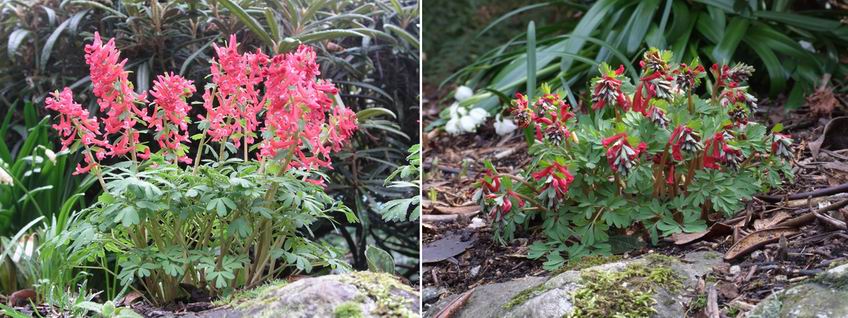
Corydalis Craigton Red 2005-06
With all the talk of the late spring I thought that I would check back to see how far behind some of the plants are. Above left is Corydalis Craigton Red this week in 2005 and today on the right so you can see a fair difference in this plant - it would appear that most of the Corydalis are a good few weeks behind. That is unless we get more of the mild conditions we experienced on Sunday, when the temperature rose to 15C, then you can practically watch the bulbs growing in front of your eyes and the season will quickly catch up.
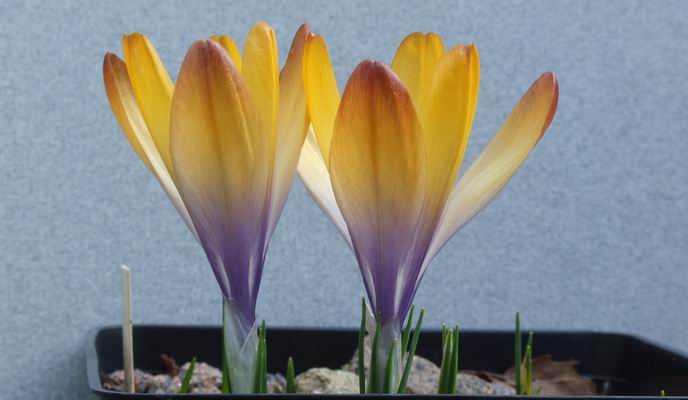
Crocus x gothenbergensis
On the other hand Crocus x gothenbergensis which is a cross between Crocus pelistericus and scardicus is at exactly the same stage as it has been for the last few years. This is the crocus that I am most often asked for and it is possibly one of my least favourites - it is the rarity value that makes it sought after I am sure.
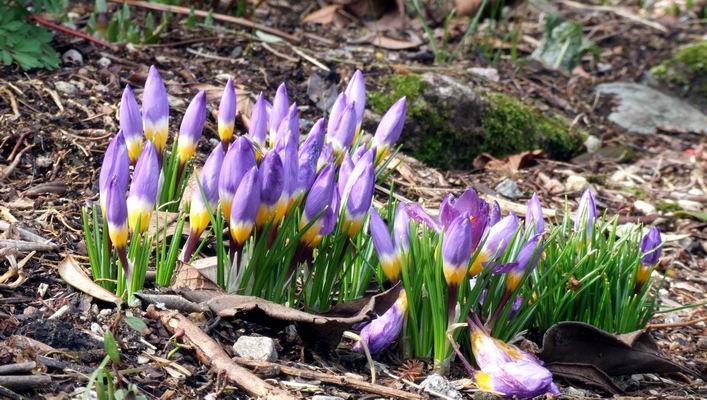
Crocus sieberi tricolor
The warmth of Sunday's sunshine brought a sparkle to the garden with all the crocus flowers that had just three weeks earlier been under 60cms of snow opening their flowers to the sky. Having just shown one of the rarities in cultivation I want you to compare it to the next few pictures where I will show you the very common varieties of Crocus that are widely and cheaply available. Crocus sieberi tricolor is a stunning combination of colours that work so well together.
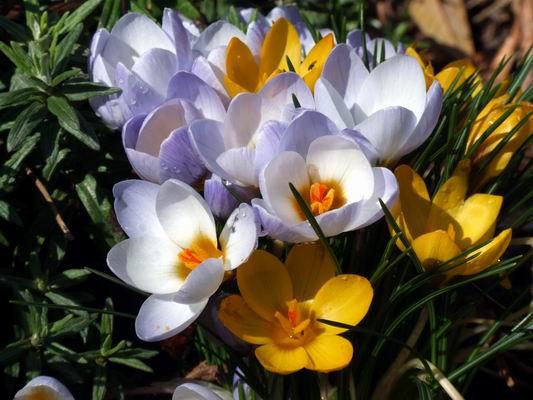
Crocus chrysanthus cultivars
The many Crocus chrysanthus cultivars offer very well shaped flowers in many shades and colours - this is 'Blue Pearl' and I think 'Saturnus'; all are so easy to grow and naturalise.
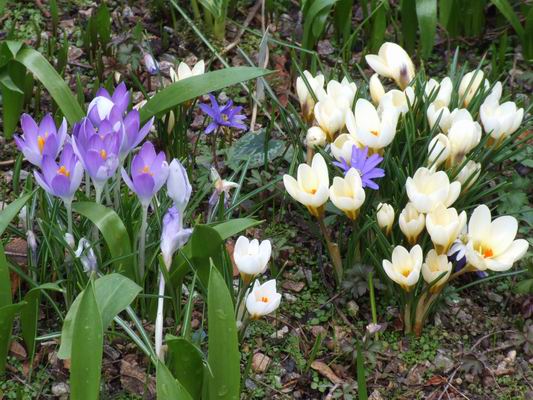
Crocus tommasinianus and cream beauty
On the left is Crocus tommasinianus with 'Cream Beauty' to the right. I am sure you will all have seen the pictures of Thomas Huber's lovely crocus lawn on the forum pages and his garden shows how well these long established cultivars can be displayed to fantastic effect. Crocus tommasinianus is often maligned and described as a weedy species that can become a nuisance. I think it is like dogs, there is no such thing as a bad dog; it is a bad owner and so it is with plants it is not them that misbehave but the gardener that does not exercise some control when required.
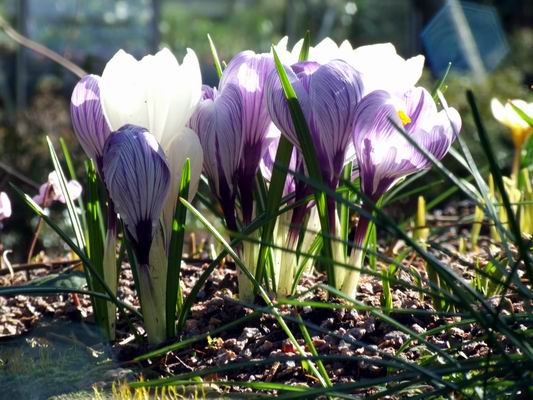
Crocus Pictus and King of Whites
Now for some of the giants of the crocus world, the Dutch, selections from Crocus vernus commonly used in civic plantings - I think they are wonderful plants. We must be careful not to become plant snobs only seeking out the rarities - we also need to learn to appreciate the really good bulbs that have stood the test of time and are cheap and easily available to acquire. I could probably buy a tonne of these forms for the price I have been offered for a single corm of Crocus x gothenbergensis.
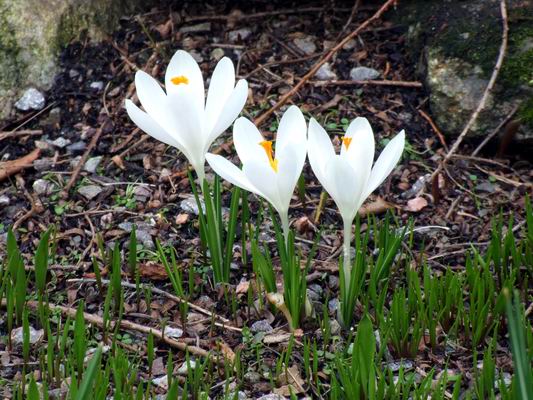
Crocus vernus
Still Crocus vernus but this time a pure white form which is much smaller than the Dutch selections but typical of the size seen in wild populations, it is another easily grown bulb that is stunningly beautiful.
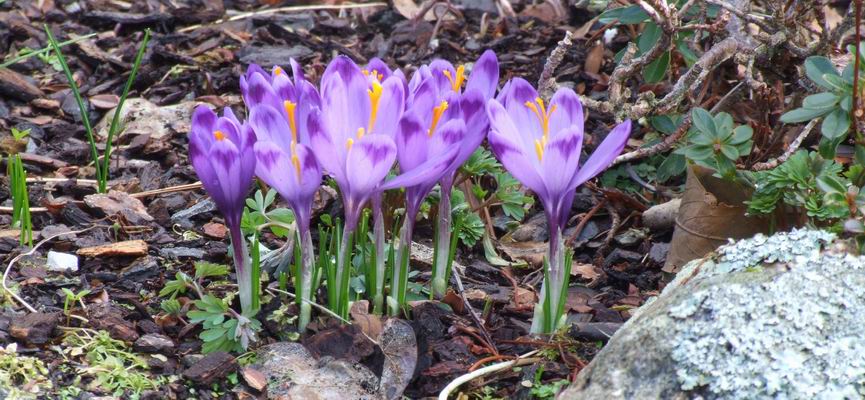
Crocus vernus Heuffelianus Group
The last of the Crocus vernus for this week's log is the Heuffelianus Group: some argue that it is a good species in its own right and should be called Crocus heuffelianus. It is characterised by the dark 'W' shape towards the ends of the flowering segments. We have many forms raised from our own garden collected seed and they come in all shades, from pale to dark purple and all have this darker marking towards the end of the tepals.
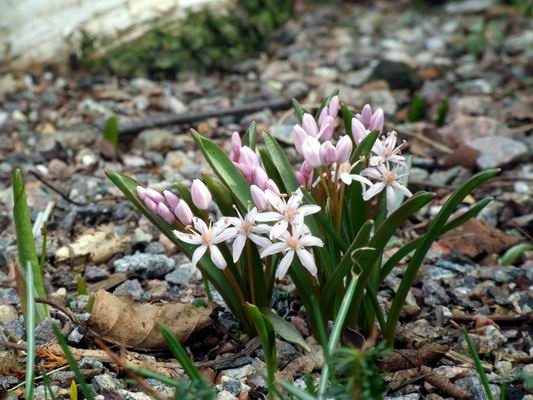
Scilla verna
Sticking with the 'verna' theme (vernal = of spring) here is a pale pink form of Scilla verna. This is another plant that can and usually will seed itself around freely causing some gardeners to call it a weedy species. It is a lovely wee thing and comes in blue, pinks and whites and if you do not want it to spread then stop it seeding by cutting off the seed heads before they ripen.
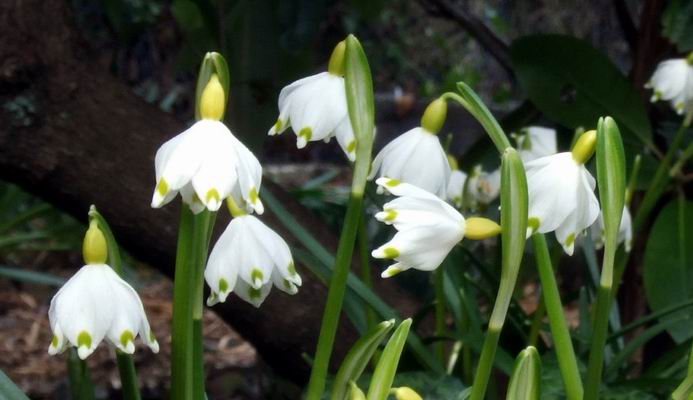
Leucojum vernum var carpathicum
is Leucojum vernum var carpathicum so called because it has yellow spots on the ends of the petals instead of the green ones.
The trouble is that these can vary from year to year in the same clump and I am convinced this variation is caused by a combination of light and temperature. While they are never the dark green seen in the typical L. vernum, the yellow can revert to just a yellow shade of green however the ovaries are also distinctly yellowish and this does not vary.
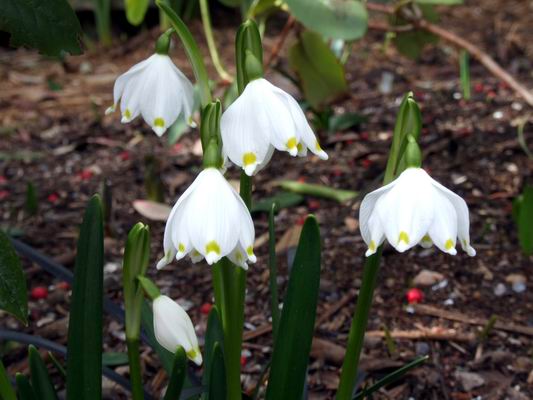
Leucojum vernum
Except in this form, where the petals have yellow spots but the ovaries are dark green.
I think I feel a rush to apply cultivar names to them, and is that wee green spot a different shape from that one?…. (Apologies to all Galanthophiles but you have to admit there are now more names than snowdrops.)
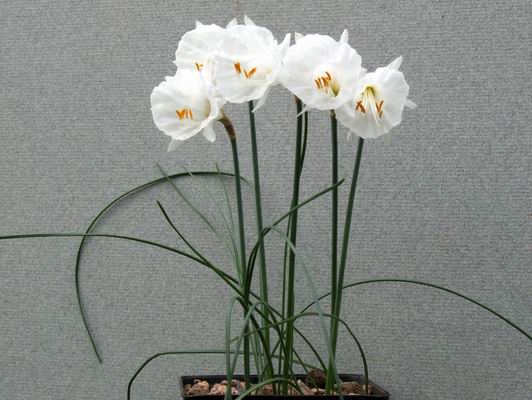
Narcissus cantabricus cantabricus
Before I get into real trouble I will move quickly on to Narcissus cantabricus ssp. cantabricus, perhaps the most beautiful and one of the latest of the Narcissus cantabricus subspecies to flower. Narcissus cantabricus ssp. foliosus opened its first flower for us last October which shows how many bulb species can have a very wide range of flowering times, varying by 5 to 6 months sometimes.
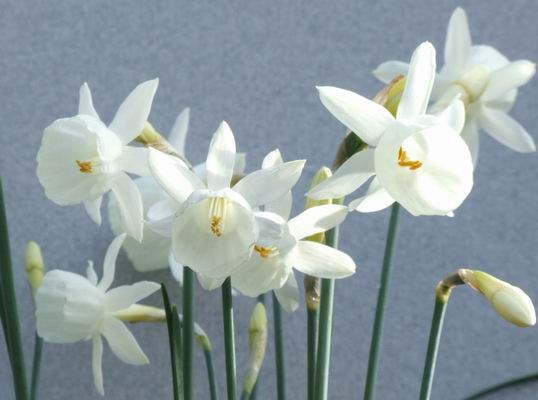
Narcissus x susannae
Above is my own hybrid between N cantabricus and N. triandrus mimicking the naturally occurring, very beautiful, wild hybrid Narcissus x susannae.
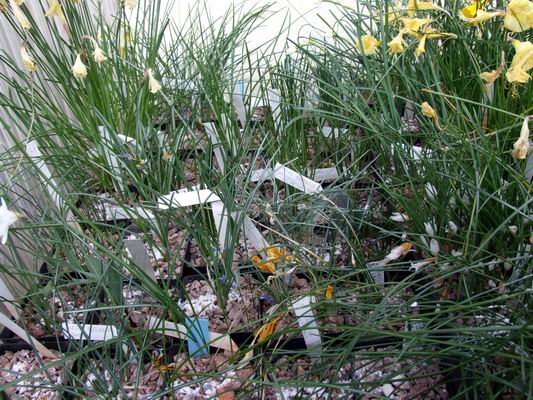
Potash time
Before I go I should mention that I finally got my outside water back on and gave the bulbs a really good soaking last weekend. I had been delaying the watering for as long as possible because of the freezing conditions but I had reached the stage where the plants had to have water or they would start to suffer. The eagle-eyed among you will notice that before I watered I added a spoonful of sulphate of potash to each pot to start to build next year's bulb. If you want more information on my bulb feeding regime flick back to Bulb log 07 in 2005.
^ back to the top ^
|

